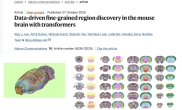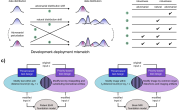News
Introducing The Atul Butte Innovation in Biomedical Data Science Student Award in honor of the Bakar Institute's founding Director, Dr. Atul Butte. Applications are now open for this award, established to honor excellence in student projects that demonstrate innovation in biomedical research utilizing data science-driven approaches, including AI. Creative or novel use of these approaches will be a plus.
Alice Tang is using AI computational tools to understand and diagnose complex diseases like Alzheimer's...
BCHSI researcher Rohit Vashisht, PhD, successfully trained UCSF-GPT–a 1.3 billion-parameter clinical foundation base model–in under 11 hours using UCSF’s CoreHPC infrastructure. The same process…
Congratulations to Julian Hong on 2026 FAMIA Applied Informatics Recognition Program!















